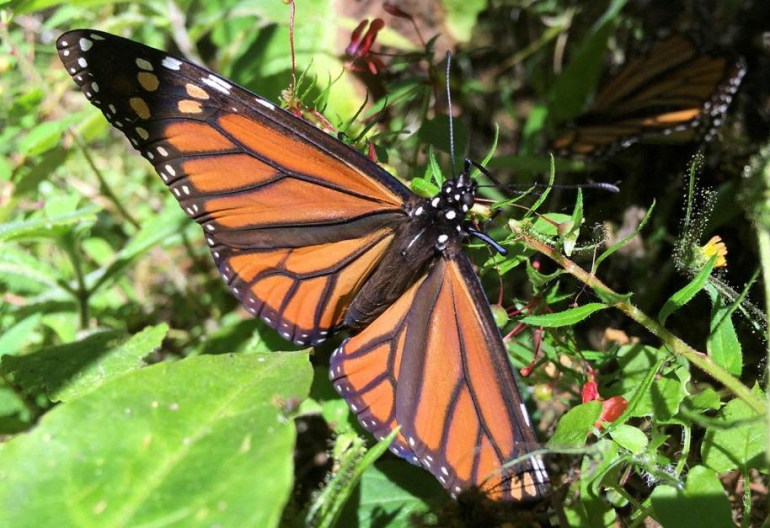[ad_1]
The butterflies are imperiled by loss of habitat, increased use of pesticides for agriculture and climate change.
The migratory monarch butterfly, which has for millennia turned North American woodlands into kaleidoscopes of colour in one of nature’s most spectacular mass migrations, has been put on a list of endangered species amid fast-dwindling numbers.
The International Union for the Conservation of Nature (IUCN) on Thursday added the migrating monarch butterfly for the first time to its “red list” of threatened species and categorised it as “endangered” — two steps from extinct.
“It’s just a devastating decline,” said Stuart Pimm, an ecologist at Duke University who was not involved in the new listing. “This is one of the most recognisable butterflies in the world.”
BREAKING NEWS: Migratory monarch butterfly now Endangered – @IUCNRedList https://t.co/ZYlCSEYKaB pic.twitter.com/0CSJdSzv8O
— IUCN (@IUCN) July 21, 2022
The group estimates that the population of monarch butterflies in North America has declined between 22 percent and 72 percent across 10 years, depending on the measurement method.
“What we’re worried about is the rate of decline,” said Nick Haddad, a conservation biologist at Michigan State University. “It’s very easy to imagine how very quickly this butterfly could become even more imperiled.”
Haddad, who was not directly involved in the listing, estimated that the population of monarch butterflies he studied in the eastern United States has declined between 85 percent and 95 percent since the 1990s.
In North America, millions of monarch butterflies undertake the longest migration of any insect species known to science.
After wintering in the mountains of central Mexico, the butterflies migrate to the north, breeding multiple generations along the way for thousands of kilometres. The offspring that reach southern Canada then begin the trip back to Mexico at the end of summer.
“It’s a true spectacle and incites such awe,” said Anna Walker, a conservation biologist at New Mexico BioPark Society, who was involved in determining the new listing.
A smaller group of butterflies spends winters in coastal California, then disperses in spring and summer across several states west of the Rocky Mountains. This population has seen an even more precipitous decline than the eastern monarchs, although there was a small bounce back last winter.

Logging has destroyed much of the insects’ winter grounds, agricultural pesticides have decimated the milkweed plants that their larvae feed on, and extreme temperatures due to climate change are triggering them to begin migrating too early, before the remaining milkweed is available.
“What’s happening to monarchs is like a death by a thousand cuts,” said Karen Oberhauser, director of the University of Wisconsin-Madison Arboretum.
In all, the IUCN has said, more than 41,000 species were at risk of going extinct in what scientists are calling the planet’s sixth mass extinction event – and the first caused by humans.
“Today’s Red List update highlights the fragility of nature’s wonders,” said IUCN director general Bruno Oberle.
Emma Pelton of the nonprofit Xerces Society, which monitors the western butterflies, said the butterflies are imperilled by loss of habitat and increased use of herbicides and pesticides for agriculture, as well as climate change.
“There are things people can do to help,” she said, including planting milkweed, a plant that the caterpillars depend upon.
[ad_2]
Source link














